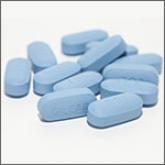Article
On-demand Pill Protocol Protects Against HIV
- Author:
- Kathryn Justesen, MD
- Shaliendra Prasad, MBBS, MPH
Finally, there’s an effective prevention strategy (other than condoms) that can be used, as needed, by patients at high risk for HIV infection.
Article

On-demand pill protocol protects against HIV
- Author:
- Kathryn Justesen, MD
- Shailendra Prasad, MBBS, MPH
Finally, there’s an effective prevention strategy—other than condoms—that can be used, as needed, by patients at high risk for HIV infection.
